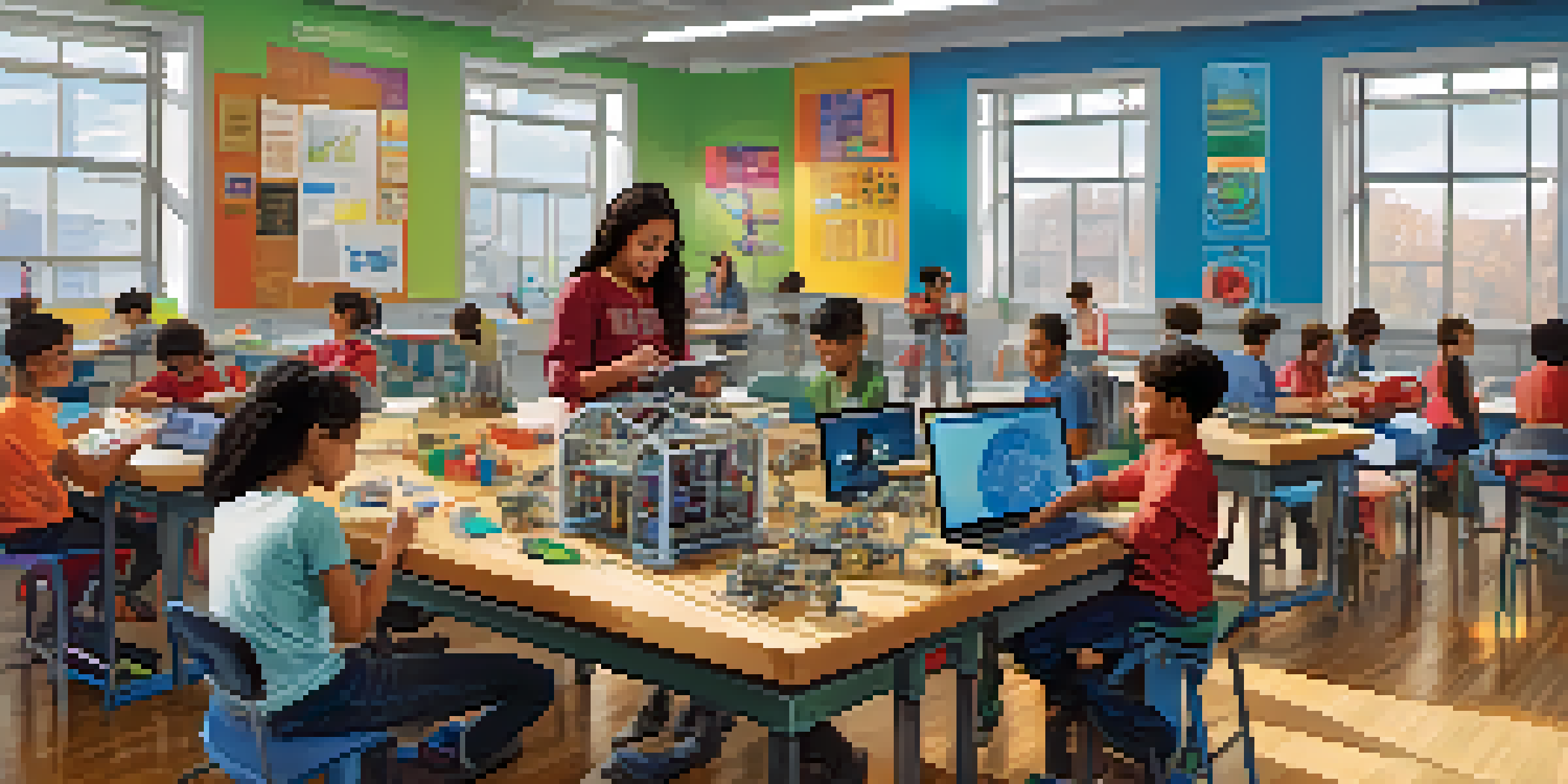The Evolution of STEM Education: Past, Present, and Future

Understanding STEM: What Does It Mean Today?
STEM stands for Science, Technology, Engineering, and Mathematics, and its importance has skyrocketed in recent years. It encompasses a wide range of disciplines that encourage critical thinking and problem-solving skills. This integrated approach prepares students for a world increasingly driven by technology and innovation. By fostering a love for these subjects, educators aim to inspire the next generation of scientists, engineers, and tech enthusiasts.
A Historical Perspective: The Roots of STEM Education
The roots of STEM education can be traced back to the early 20th century, with a focus on practical skills and vocational training. Schools began to emphasize hands-on learning, particularly in technical fields, as industrialization took off. However, it wasn't until the 1980s that the term 'STEM' was officially coined, aligning science and mathematics with engineering and technology. This shift marked a pivotal moment, emphasizing the interconnected nature of these fields.
STEM Education's Growing Importance
STEM education is vital for developing critical thinking and problem-solving skills necessary for a technology-driven world.
The Shift in Educational Approaches: From Rote Learning to Inquiry
In the past, education often revolved around rote memorization and standardized testing, which didn’t capture students' natural curiosity. Today, there is a significant shift towards inquiry-based learning, where students engage in hands-on projects and real-world problem solving. This approach not only makes learning more engaging but also helps students develop critical thinking skills. By encouraging exploration and experimentation, educators are fostering a deeper understanding of STEM concepts.
The Role of Technology in Modern STEM Education
Technology has revolutionized how STEM subjects are taught, making learning more interactive and accessible. Tools like virtual labs, coding platforms, and educational apps provide students with opportunities to experiment and collaborate in ways that were not possible before. Additionally, online resources enable learners to access a wealth of information and tutorials at their fingertips. As a result, technology is not just a subject but an integral part of the learning experience in STEM education.
Interdisciplinary Learning Trends
The rise of interdisciplinary learning in STEM connects various subjects, enhancing relevance and applicability to real-world challenges.
Current Trends: The Rise of Interdisciplinary Learning
One of the most exciting trends in STEM education today is the move towards interdisciplinary learning. This approach connects the dots between different subjects, allowing students to see how math impacts science or how technology influences engineering. For example, a project on renewable energy can incorporate principles from physics, environmental science, and mathematics. This holistic perspective not only makes learning more relevant but also prepares students for real-world challenges.
Equity and Inclusion: Bridging the Gender and Diversity Gap
Despite progress, there remains a significant gender and diversity gap in STEM fields. Efforts are being made to encourage underrepresented groups to pursue STEM education through targeted programs and scholarships. Initiatives like coding camps for girls and mentorship programs for minority students are gaining traction. By fostering an inclusive environment, educators are not only enriching the learning experience but also ensuring that a diverse range of voices contributes to future innovations.
Focus on Equity and Inclusion
Efforts to bridge the gender and diversity gap in STEM are essential for enriching the learning experience and fostering innovation.
Looking Ahead: The Future of STEM Education
As we look toward the future, STEM education is poised to evolve even further with advancements in artificial intelligence and machine learning. These technologies will likely reshape curricula, personalizing learning experiences to fit individual student needs. Moreover, the importance of sustainability will drive the integration of environmental studies into STEM programs. Ultimately, the future of STEM education promises to be dynamic, adaptable, and more relevant than ever.
Conclusion: The Ongoing Journey of STEM Education
The evolution of STEM education is an ongoing journey that reflects the changing landscape of society and technology. From its historical roots to its current emphasis on inquiry and inclusivity, STEM education continues to adapt to meet the needs of students. As we embrace new technologies and methodologies, the goal remains the same: to inspire and prepare future generations for a world where STEM skills are essential. Together, we can cultivate a passion for learning that drives innovation and progress.